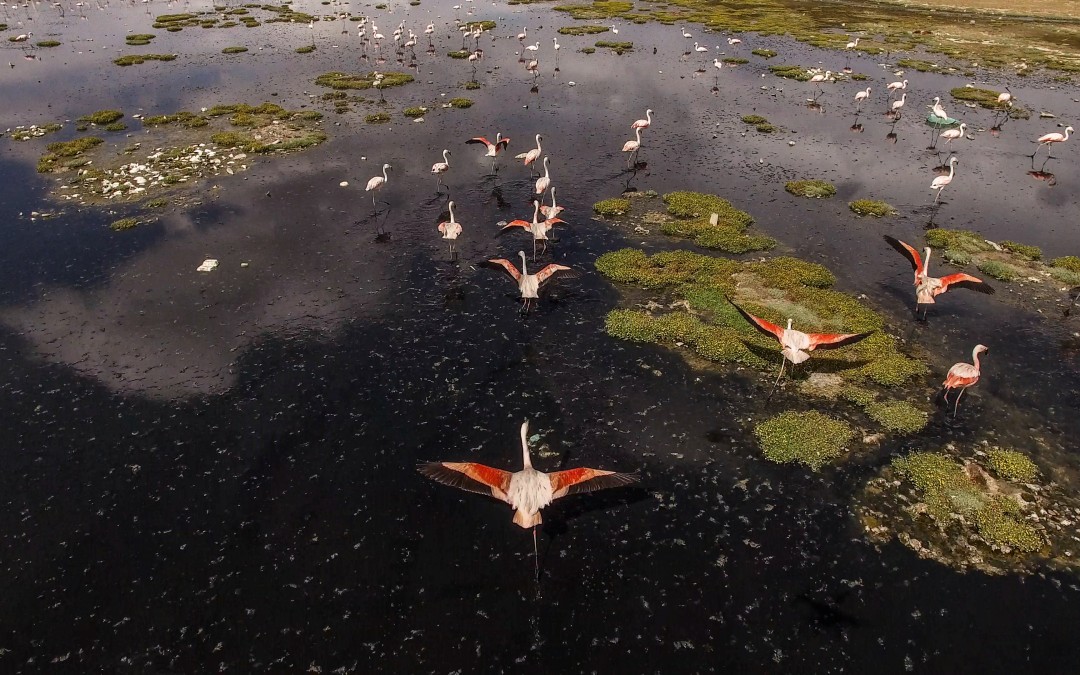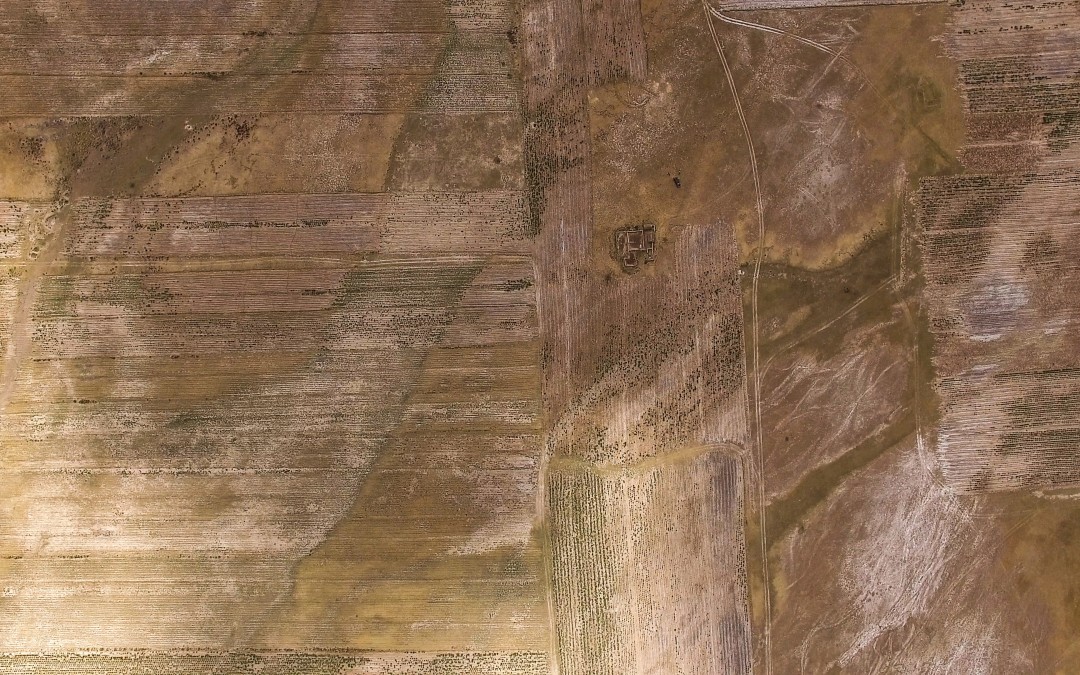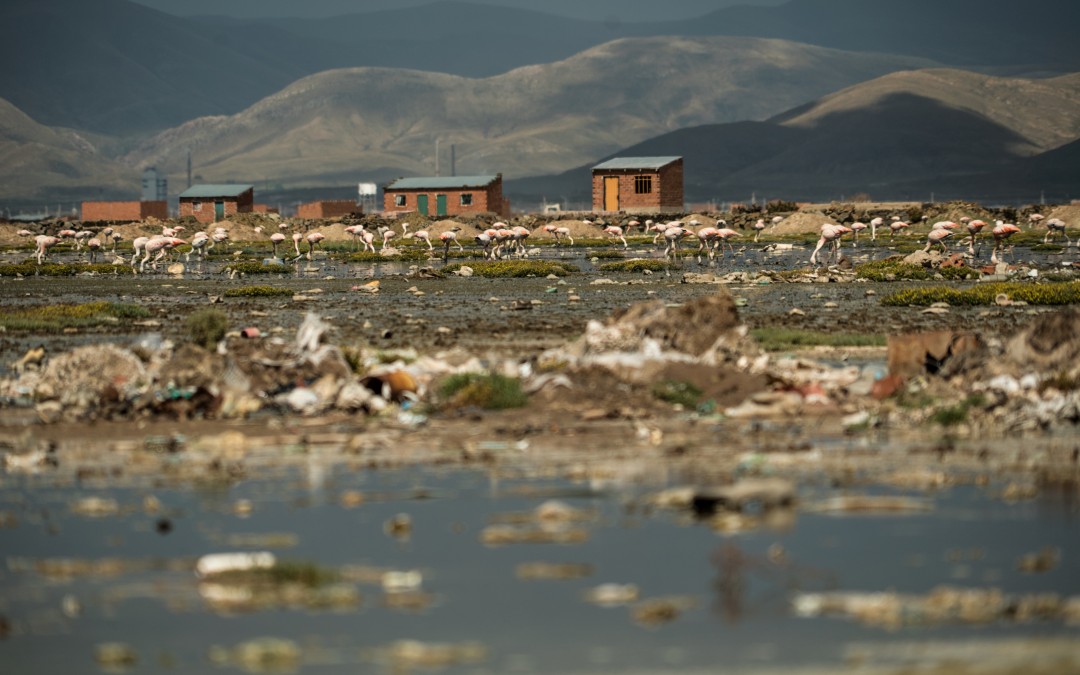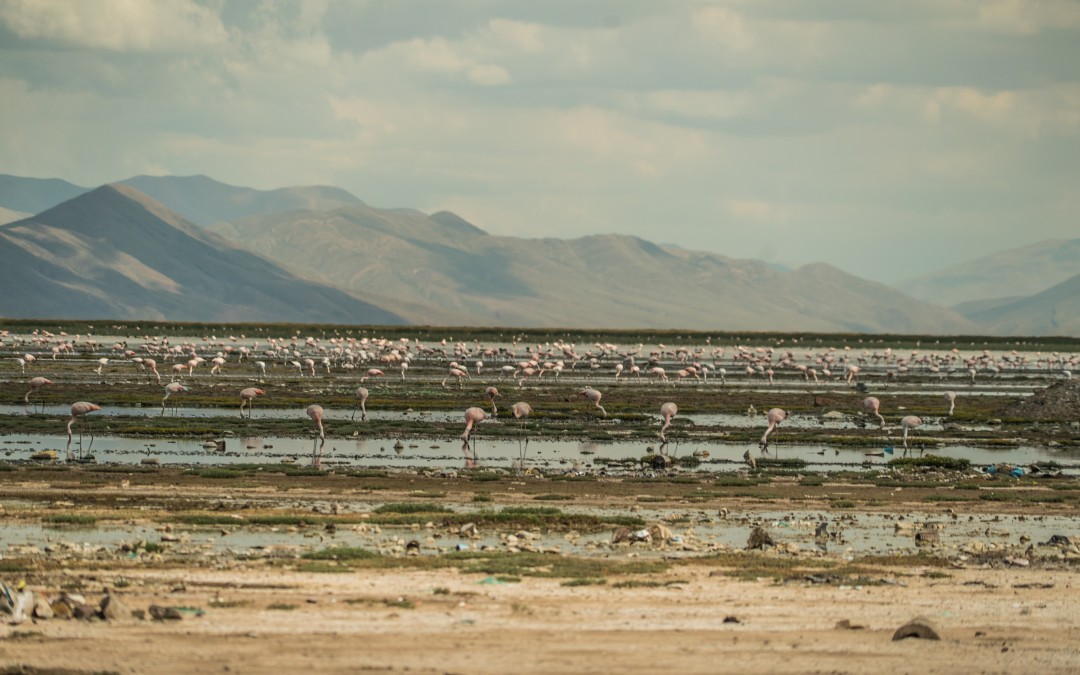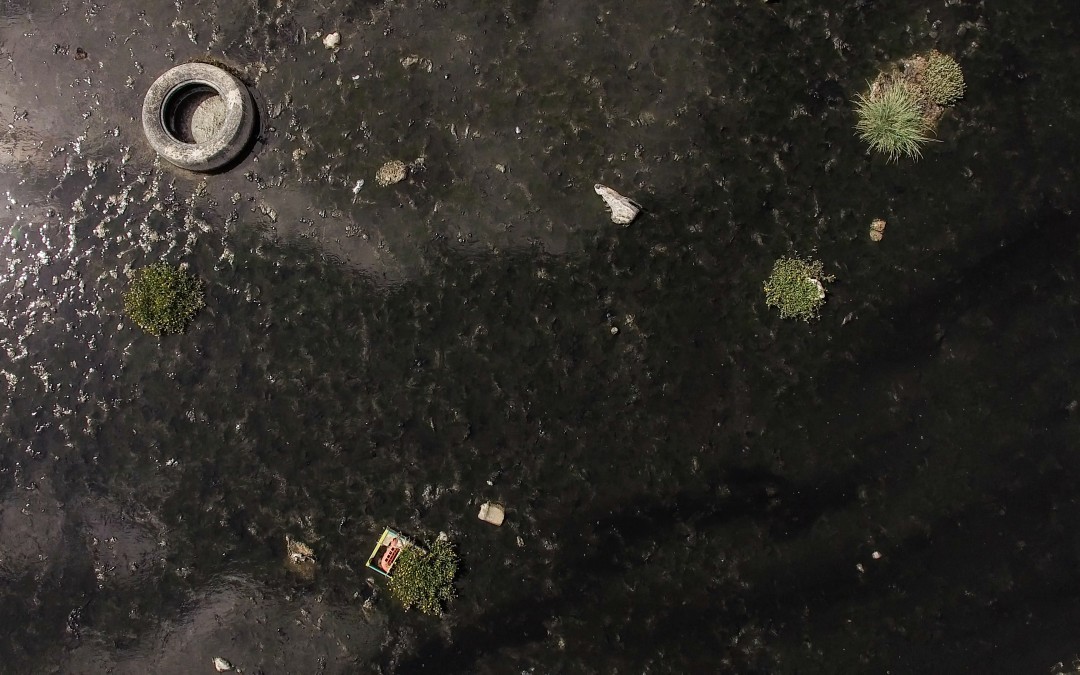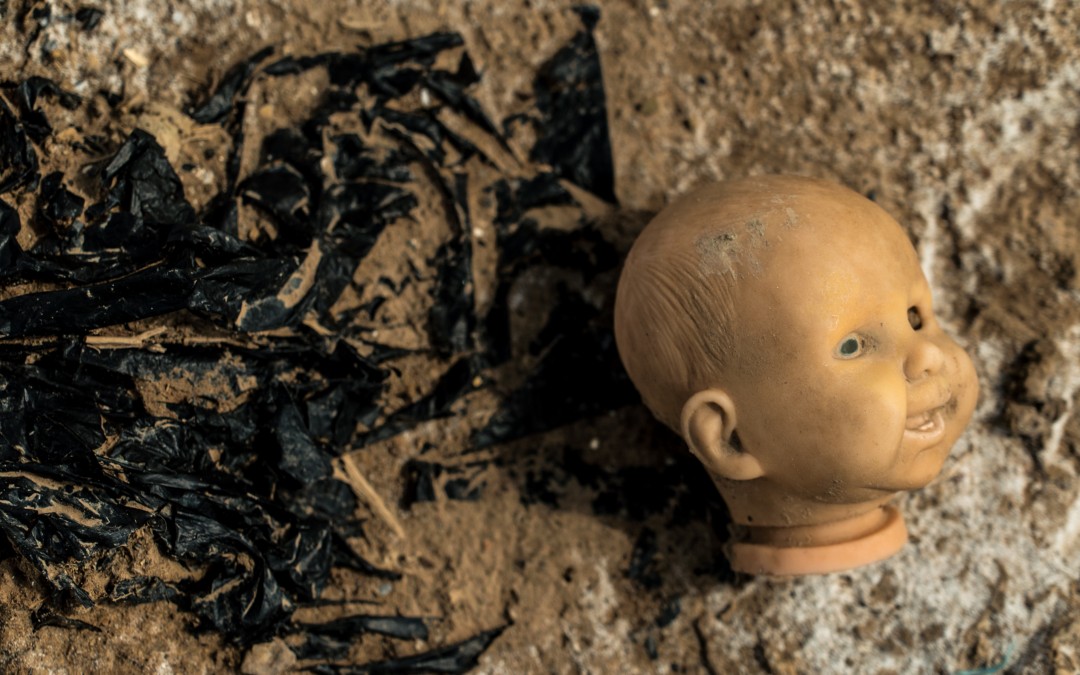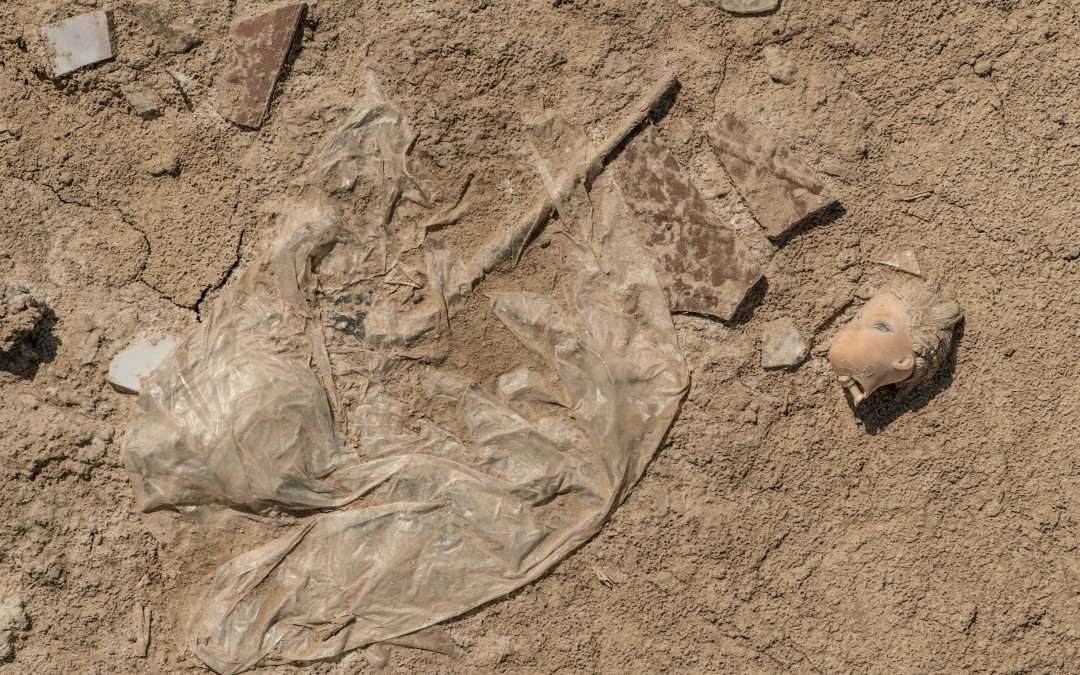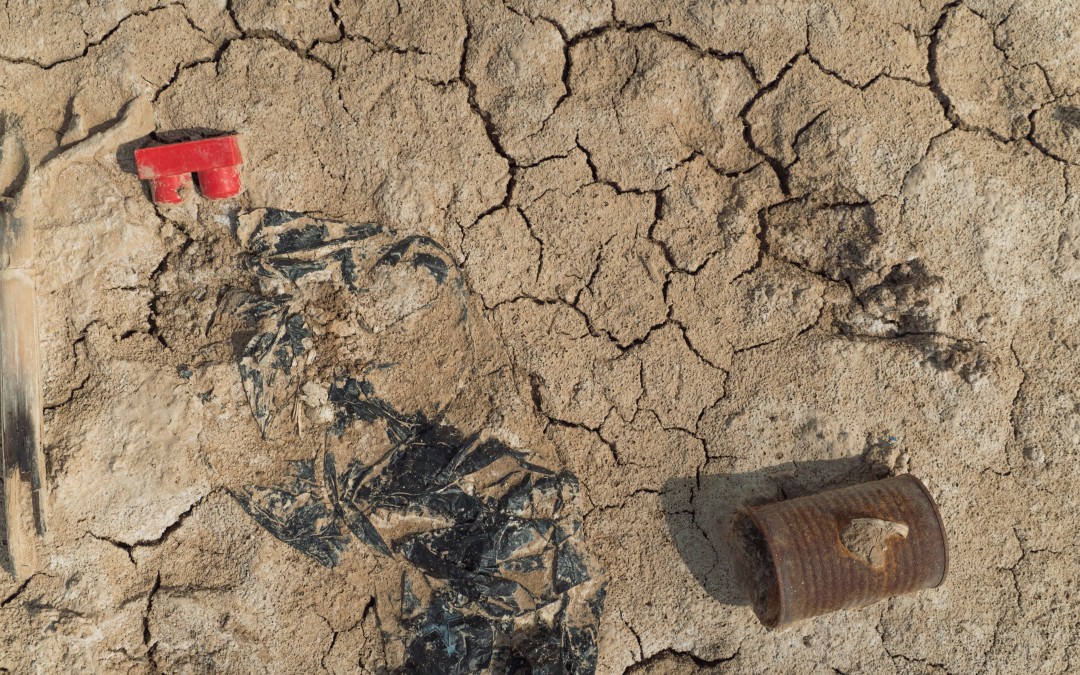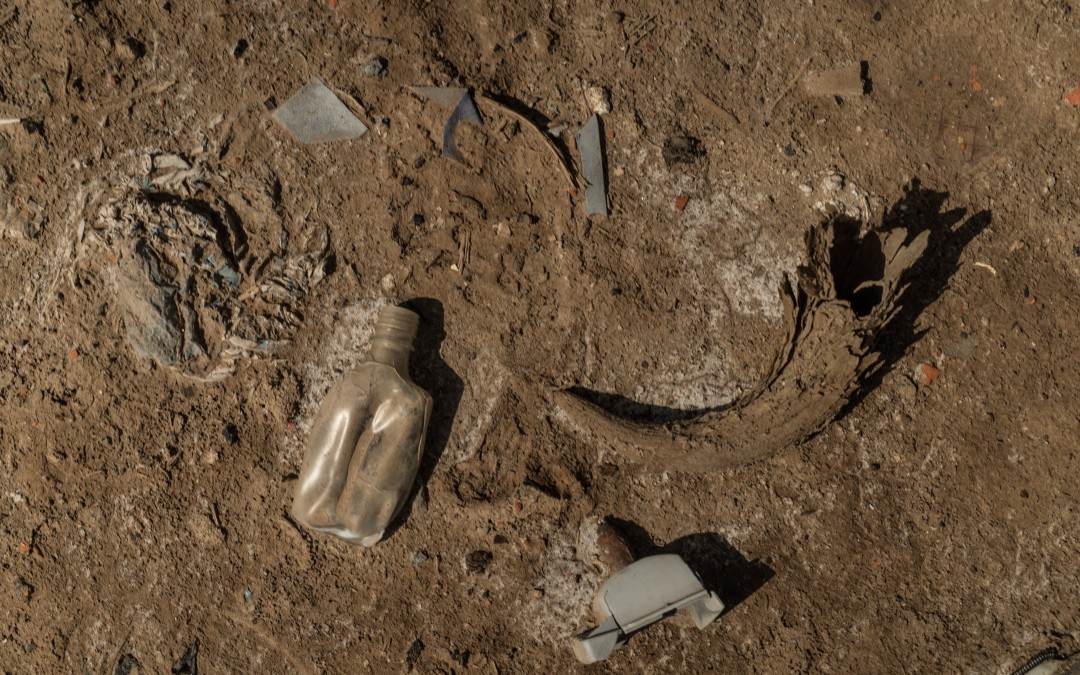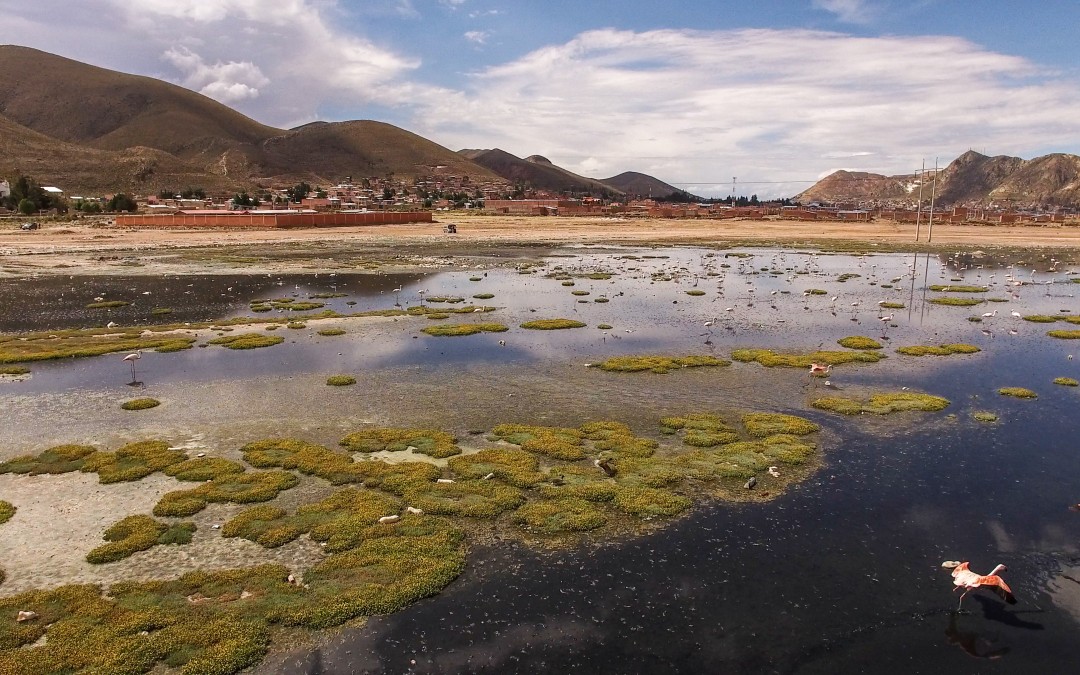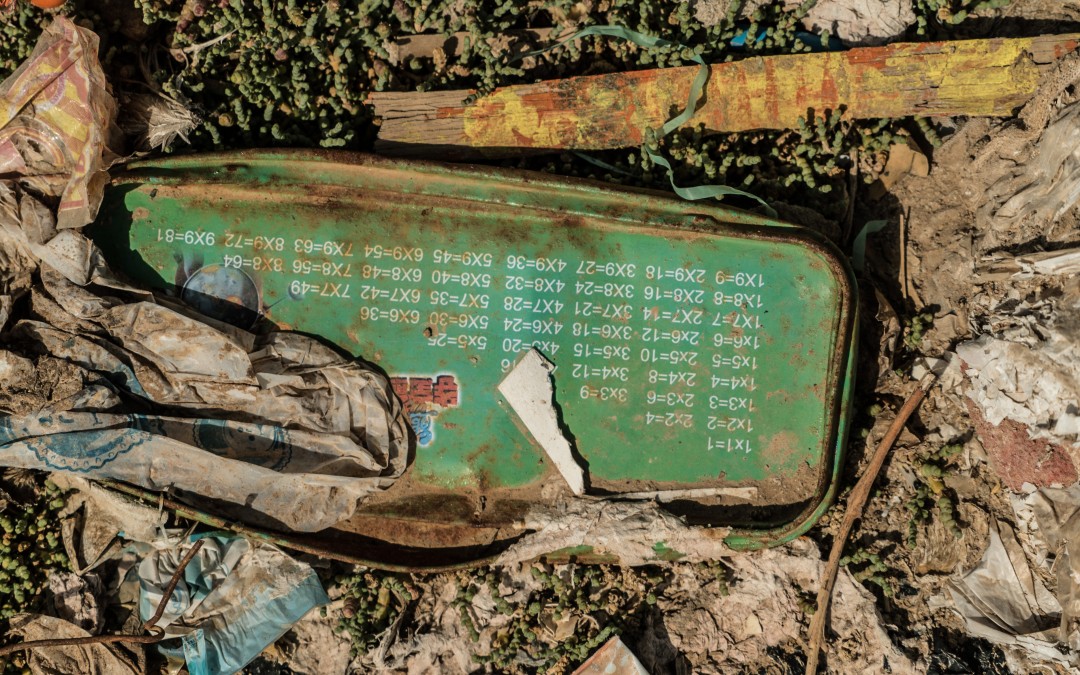A natural process accelerated thousands of years
President Evo Morales told a story late last year to explain that Lake Poopó – the second largest in Bolivia – dries up time and again only to fill up again with water and fish: the Bolivian President said his father would cross the lake on a bicycle when he was very young, pedaling more than 95 miles between his home town of Orinoca and Oruro, the department’s capital.
“He used to take dried meat in his knapsack on his back, ready to eat, and without stopping, he would get there by crossing Lake Poopó,” said Bolivia’s first indigenous President, in answer to the experts who had reported that the disappearance of the second largest lake in the country was not just due to an ordinary cycle this time, and that it might take many years to restore conditions necessary for sustaining an aquatic ecosystem.
In fact, this is not the first time Lake Poopó has receded and this can be shown by some satellite images that are available and by the testimony heard by residents such as Valerio Rojas, through stories their grandparents told them explaining that before the Chaco War (1932-1935) the lake almost disappeared and that “they had nothing to eat.”
But there are many signs that this time will not be the same, as explained by Milton Pérez, an agronomist at the Technical University of Oruro (UTO) who has committed to studying the lake’s natural cycles.
Pérez states that other regressive cycles, such as those of 1932 or 1994, were much shorter. “They were temporary dry spells lasting six weeks, one month, or two at the most.” In those times, the resilience of Lake Poopó was such that the lake level would recover just with the rains, as would its ecosystem and its function of regulating the region’s climate.
Even though the month of March brought one week of rain to the lake, the rainy season in this part of the Bolivian Altiplano is almost over and will not return until October. Consequently, the chances are practically nil that the lake will soon return to being a source of sustenance for the members of communities in the area.
As Pérez explains it, this time around, other aggravating factors have been added to the lake’s natural cycle, such as the area’s rise in temperature by between 0.6 and 0.9 degrees Celsius (between 1.08 and 1.62 degrees Fahrenheit), which causes a more rapid evaporation of the water. To this is added the El Niño phenomenon, each time more frequent and more powerful, and which diminishes precipitation in the area and makes it so that Lake Poopó does not have enough time to recover between one dry spell and the next.
Other effects from human activity, the expert explains, have also done harm to Lake Poopó: the diversion of the Desaguadero River, which was supposed to flow into the lake but now barely trickles into the area; the mining activity, which has polluted the lake and accelerated it natural desiccation process; and the effects of agriculture and livestock grazing, which have caused tons of sediment to settle onto Lake Poopó. This last effect has modified its topographical profile and has practically converted the lake from a basin into a plateau, something that makes it more likely that the water will evaporate, whether it rains or not.
“All these anthropocentric activities, combined with natural phenomena, have made the desiccation process accelerate,” explains the agronomist from the UTO. “Lake Poopó was bound to go dry, but that was supposed to happen 2,000 or 3,000 years form now,” says Pérez.
Pérez is of the opinion that the lake may completely recover over a 20-year period but only if all the factors that have contributed to its disappearance are minimized.
With the lake’s disappearance, dozens of species of fish, birds, reptiles and mammals have died or have found it necessary to migrate, and the plants that once drew their nutrients for the lake have disappeared along with it.
In fact, millions of fish died one year before Lake Poopó dried up, during an episode that that the residents attribute to a strong wind that pushed the fish out of the lake. For scientists, that was a clear sign that the water was not deep enough and did not have the oxygen levels required by aquatic animals to stay alive. In the opinion of experts, even though Lake Poopó may recover its water, it will be difficult for it to have the conditions suitable for hosting an aquatic system, at least in the short term.
One of the more visible migrations of species is that of the Andean flamingo, known as the pariguana. Each year, these birds would fly from Chile as far as Lake Poopó to lay their eggs, but when they couldn’t find the lake in 2015 they continued northward until they found Lake Uru Uru, in the vicinity of Oruro, a city whose waste water it receives. The Andean flamingos, which feed off algae, are now surviving while being surrounded by garbage and are ingesting toxic substances being discharged by the mining companies into the waters of Lake Uru Uru.
The disappearance of the fish and birds has caused the towns near Lake Poopó to become half deserted. Most of the residents of Untavi and Villa Ñeque, two places that had depended on Lake Poopó for their subsistence, have moved away to other cities and even to other countries in the region, seeking to earn a living; and those who remain may face the same plight if the lake does not fill up again, as they expect.
Víctor Hugo Vásquez, Governor of Oruro, is from the same district as Evo Morales, and they belong to the same political party, and he agrees with the Bolivian President that there is no doubt that the lake will again be the same in a few years. Meanwhile, Vásquez says, his government helps the towns most affected by the disappearance of Lake Poopó by delivering fresh produce to the families most affected and creating alternative projects such as hatcheries and fish farms
For him, the lake’s current problems are the consequence of climate change, for which the industrialized nations and capitalism are to blame. “I am convinced, willing to bet my neck (…) I see the time drawing near when I’ll be able to say to you: ‘Here it is. Come, my intellectual friends, I want you to see something different.’ Lake Poopó is going to fill up again and is going to be a source of wealth and sustenance for our families,” the governor maintains.
